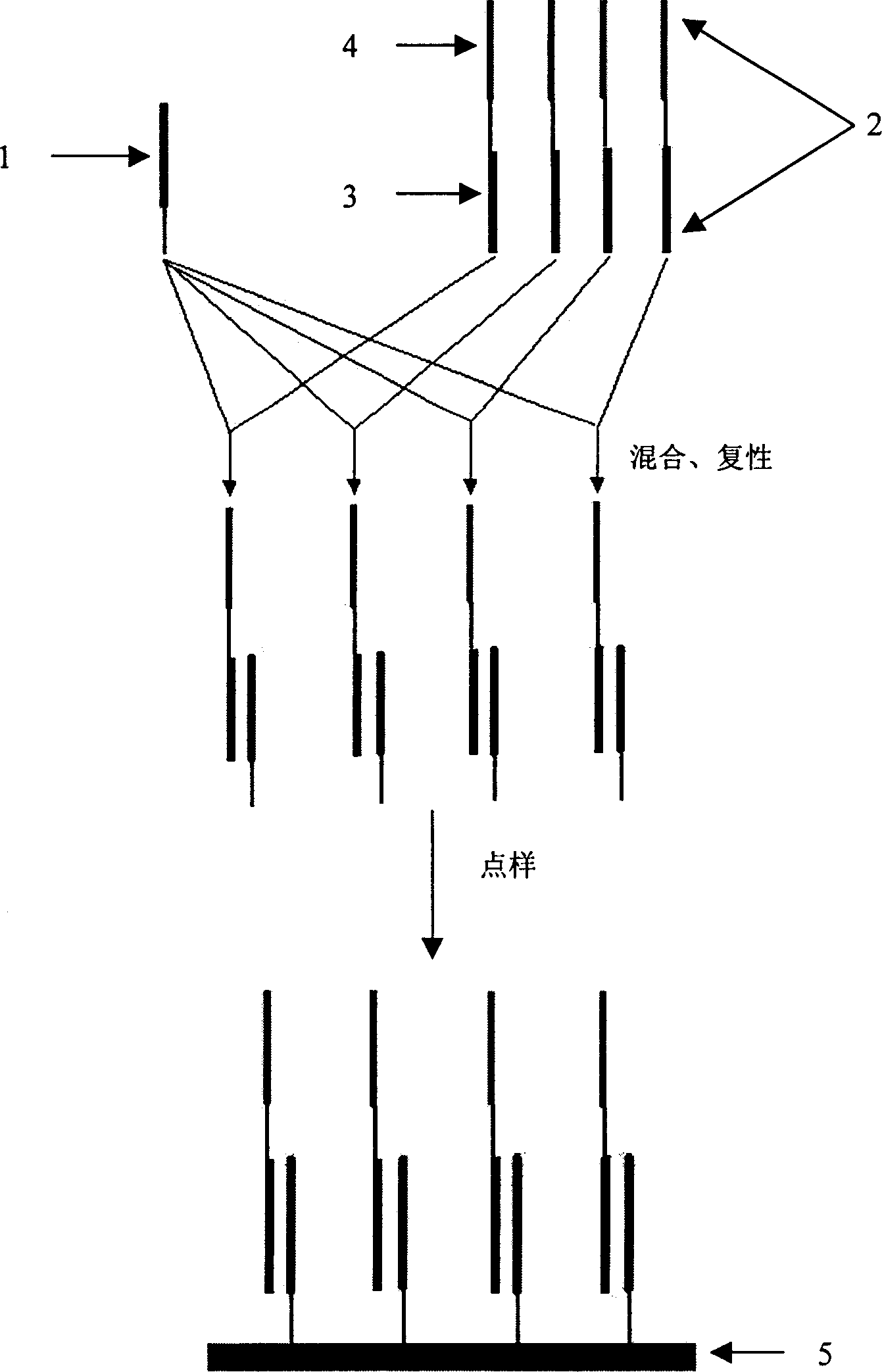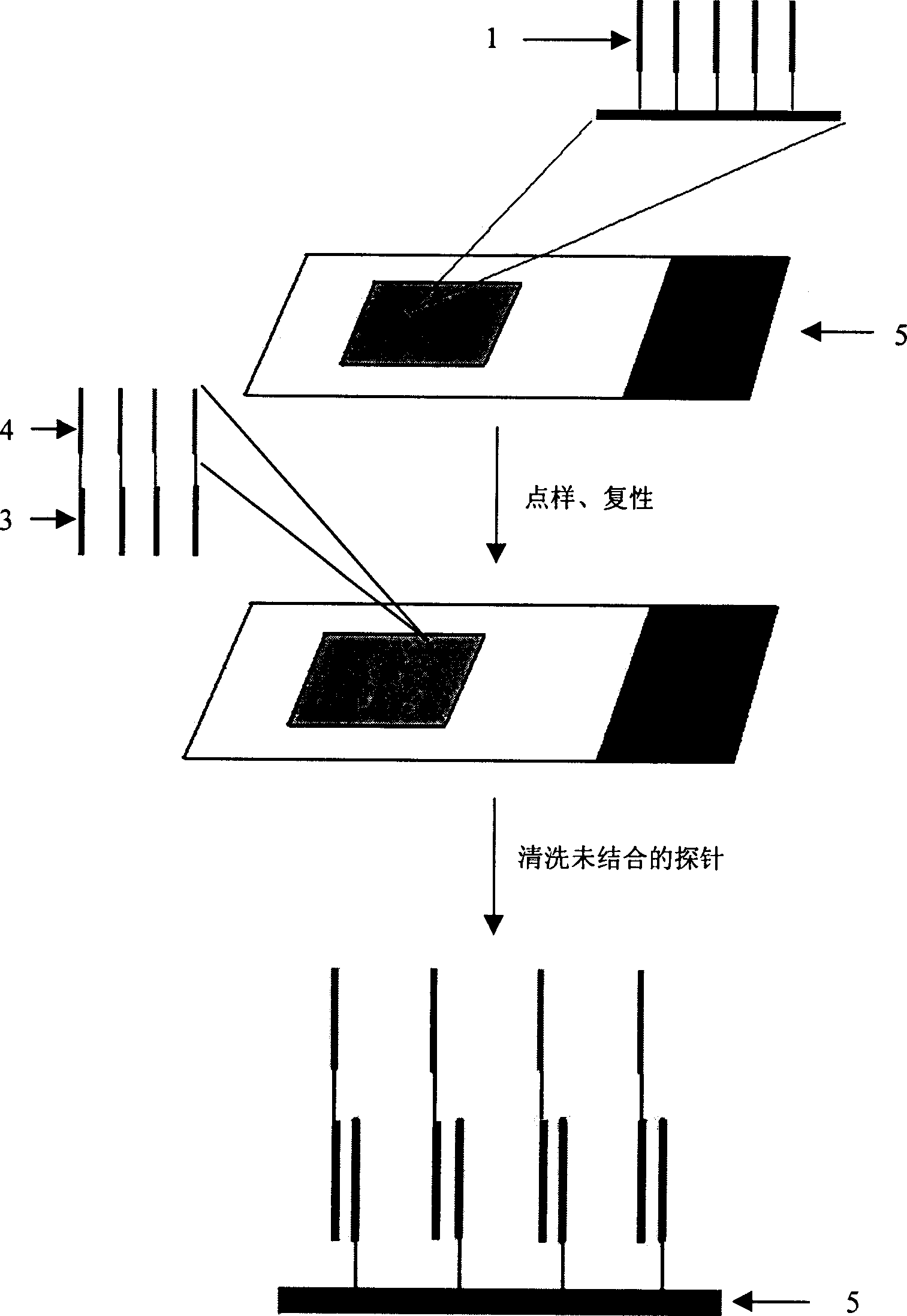Microarray chip of oligonucleotide and its preparing method
A technology of oligonucleotides and microarray chips, which is applied in the field of preparation of low-cost oligonucleotide microarray chips, can solve the problems of limiting the popularization and application of oligonucleotide microarray chips and high preparation costs, etc. Achieve the effect of reducing preparation cost, avoiding high cost and high reliability
- Summary
- Abstract
- Description
- Claims
- Application Information
AI Technical Summary
Problems solved by technology
Method used
Image
Examples
Embodiment 1
[0020] Embodiment 1: with reference to attached figure 1 A method for preparing an oligonucleotide microarray chip. Specifically as follows: 1, synthesize a universal oligonucleotide 1 (such as amino or thiol, etc.) with a special group label; 2, synthesize an oligonucleotide probe 2 without any group modification, the probe The needle consists of two parts (universal oligonucleotide complementary region 3 and probe-specific region 4), and the sequence of the probe-specific region is designed according to our needs; 3. The universal oligonucleotide 1 is combined with different oligonucleotides Nucleotide probe 2 is mixed in a centrifuge tube (Eppendorf tube) in equal proportions; 4. Place the above-mentioned Eppendorf tube in boiling water for 2 minutes to 5 minutes, and then naturally cool to room temperature for renaturation. 5. Spot the renatured product on the pre-treated substrate 5 (such as aldehyde or mercapto-coated glass slide) by a spotting device to form an oligonu...
Embodiment 2
[0021] Embodiment 2: with reference to attached figure 2 Another method for preparing an oligonucleotide microarray chip. Specifically as follows: 1. Synthesize a general oligonucleotide sequence 1 on a substrate 5 (such as a glass sheet or other material) by in situ synthesis technology; 2. Synthesize an oligonucleotide without any group modification Probe 2, the probe includes two parts (universal oligonucleotide complementary sequence 3 and target gene complementary sequence 4), the target gene complementary sequence 4 is designed according to our needs; Spot 2 nucleotide probes on the above-mentioned substrate to form a microarray chip; 4. Place the spotted chip in a humid hybridization box, and anneal at 42°C to 62°C for 4 hours; 5. Use 0.1% dodecyl Sodium alkyl sulfate (SDS) was used to remove unbound oligonucleotide probe 2, and then thoroughly washed with double distilled water, and dried for use.
PUM
 Login to View More
Login to View More Abstract
Description
Claims
Application Information
 Login to View More
Login to View More - R&D
- Intellectual Property
- Life Sciences
- Materials
- Tech Scout
- Unparalleled Data Quality
- Higher Quality Content
- 60% Fewer Hallucinations
Browse by: Latest US Patents, China's latest patents, Technical Efficacy Thesaurus, Application Domain, Technology Topic, Popular Technical Reports.
© 2025 PatSnap. All rights reserved.Legal|Privacy policy|Modern Slavery Act Transparency Statement|Sitemap|About US| Contact US: help@patsnap.com



